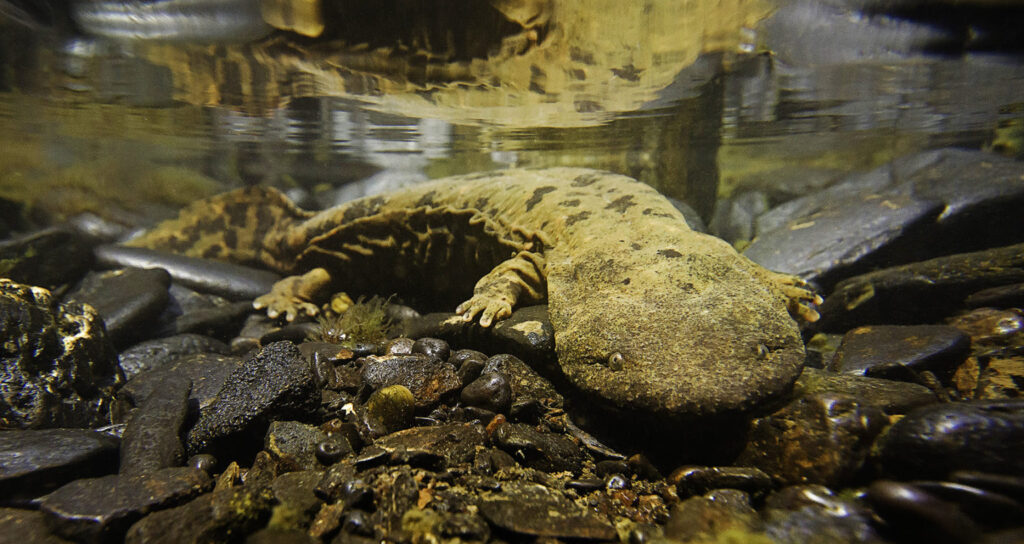Eastern hellbenders are slimy, flat and brown huge salamanders – North America’s largest. With beady eyes and a natural smirk, they are so ugly as to almost be cute. Hellbenders can grow to over two feet in length, weigh more than five pounds, and live more than 30 years. Even with all this going for them, Eastern Hellbender populations have been declining throughout the Appalachian mountains since the early 1970’s, with almost 80% of the eastern hellbender population having disappeared in the past century. This is why the recent proposal by the US Fish and Wildlife Service to list the hellbender as an endangered species is good news. With this designation, the hellbender can receive the protection it needs to rebound. The proposal comes with a 60 day comment period, which began on December 13, 2024 and will run through February 10, 2025. The New River Conservancy (NRC) is seeking support for the designation.
Eastern Hellbenders are an aquatic species that prefer clear, fast-flowing, well-oxygenated streams and rivers. Because of hellbenders’ preference for clean streams and rivers, their presence serves as an excellent indicator of good water quality. Hellbenders are super sensitive to silt, sedimentation and water pollution. Because of this, they are considered biological indicators of water quality. As the N.C. Wildlife Resources Commission (NCWRC) puts it, “if there is a healthy hellbender population in a stream, there is clean water.”
The decline of Eastern Hellbenders can largely be attributed to the degradation of stream quality, which is caused by the damming of rivers, water pollution, and siltation of streams. Dams eliminate free-flowing sections of rivers and produce low oxygen conditions on the river bottom. Toxic chemicals, such as untreated sewage and chemical runoff from lawns, fields, and parking lots pollute rivers and streams, impacting water quality and the health of hellbenders.
William Hopkins, professor in the Department of Fish and Wildlife Conservation and director of the Global Change Center at Virginia Tech, suspected the hellbenders’ plight had connections with environmental changes engineered by humans. In an article published in June of 2023, Hopkins says “This is an animal that has been resilient over millions and millions of years, and something that we’re doing to the planet is severe enough that it’s causing them to disappear, and disappear quickly,”
In most states within their range, hellbenders are listed as rare, threatened, or endangered. Within the New River Watershed, North Carolina, Virginia and West Virginia Departments of Wildlife Resources have all listed the Eastern Hellbender as a Species of Greatest Conservation Need in their Wildlife Action Plans. Andrew Downs, executive director for NRC
The New River Conservancy is urging citizens throughout the watershed and beyond to comment their support for the endangered species designation before the deadline of February 11, 2025. Visit https://www.regulations.gov/commenton/FWS-R3-ES-2024-0152-0001 to comment, or visit newriverconservancy.org and click on the Hellbender button at the top of the page.
Cutline: The Eastern Hellbender makes its way along the rocky bottoms of crystal clear streams and waterways in the Appalachian mountains. Photo: Orianne Society


